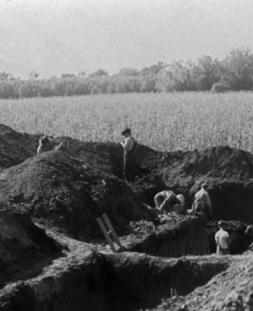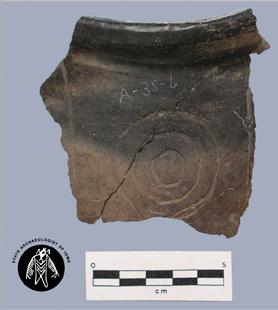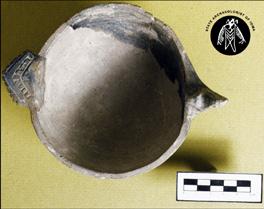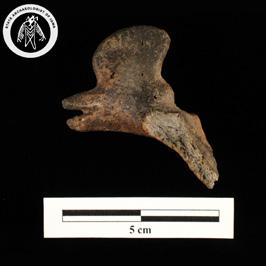
3 minute read
Farmers Mutual Insurance Association
A photograph of the first excavation at the Kimball Village Site in 1939. The artifacts pictured with this story all were excavated during this 1939 dig. A portion of a pottery vessel from the Kimball Site. The vessel displays an engraved sun circle. This photo and all subsequent photos from University of Iowa Office of the State Archaeologist.

Advertisement
During first dig, the WPA team dug trenches eight feet deep into the site and made an astonishing discovery: houses, hearths, storage pits, burial features and more than 9,000 artifacts, including more than 100 tools made from bone, shell and stone beads, and ceramic pottery dating back about 800 years. The 2009 investigations revealed that the village covered about two acres.
Today’s modern investigative techniques allow for research that does not disturb what is below the ground. A geophysical technique called magnetic gradiometry shows evidence of as many as 21 possible earth lodges surrounded by a ditch and wall.
The state archaeologist stated that the Mill Creek Culture was highly distinctive and short-lived. The Mill Creek people “followed a way of life completely different from those before them.”

In addition, “The Mill Creek culture is part of a larger group of horticultural villages that start to appear around 1000 near the Missouri River from northwest Iowa to central South Dakota. The 35 known Mill Creek villages cluster in two distinct areas in northwest Iowa: along the Little Sioux River and its three tributaries (Brooke Creek, Mill Creek, and Waterman Creek) and along the Big Sioux River and its tributaries in Plymouth County.” The Mill Creek inhabitants “practiced a mixed economy, relying upon both horticulture and hunting as food sources. Maize
LOCAL | RELIABLE | SERVICE
fmiahull.com | 712.439.1722

A small and beautifully-detailed bird effigy from the Kimball Village Site is made of shell.

An effigy pot from the Kimball Village, a Mill Creek culture site near the Big Sioux River. Late Prehistoric Mill Creek (ca. AD 1000-1200) ceramic vessels often had effigies as handles. See additional photos at iowaarchaeology.tumblr.com/search/Kimball+Village.

Mill Creek tribe house plans as identified at the Kimball Village Site near Westfield. The floors of Mill Creek structures were dotted with large basin and bell-shaped storage pits (cache pits) designed to store surplus food and other items. Cache pits also occur outside of houses. From University of Iowa Office of the State Archaeologist A ceramic bird effigy (possibly a woodpecker) from the Kimball site.

was one of the most important foods grown, with chenopods (goosefoot), marshelder, and squash also being utilized. Large hoes manufactured from the scapula of bison were used to till the ground. The Mill Creek sometimes utilized a garden area composed of numerous mounds of earth, referred to by archaeologists as ridged fields. Bison, deer, and elk supplied the bulk of the meat resources, with water fowl, catfish, beavers, and squirrels also being hunted.” An intriguing aspect are the long-distance connections made by the Mill Creek peoples. They “established trade relations with the Middle Mississippian culture of the eastern woodlands, specifically those living in western Illinois. These relations are seen by the occurrence of locally made copies of Middle Mississippian ceramic vessels found at several Mill Creek sites,” and, in turn, Mill Creek vessels found in the central Illinois River valley. “Bison scapula hoes, bird-wing fans, and bone bracelets, all of which are Plains-derived traits,” also occur in the central Illinois valley, “while Middle Mississippian Long-Nosed God masks are found at several Mill Creek sites. Other possible items traded between the two cultures include marine shell beads, bison robes, bird feathers, and hawk and eagle medicine bags.” The Mill Creek’s widespread trading network reached as far south as the Gulf Coast and Florida.
Experts are unsure what happened to Mill Creek people in northwestern Iowa. There’s some evidence the Mandan and Hidatsa eventually developed from Mill Creek roots. The Mill Creek may have left Iowa for Dakota voluntarily or they may have felt encroached upon by the Oneota tribes who were the next to live in the area.









